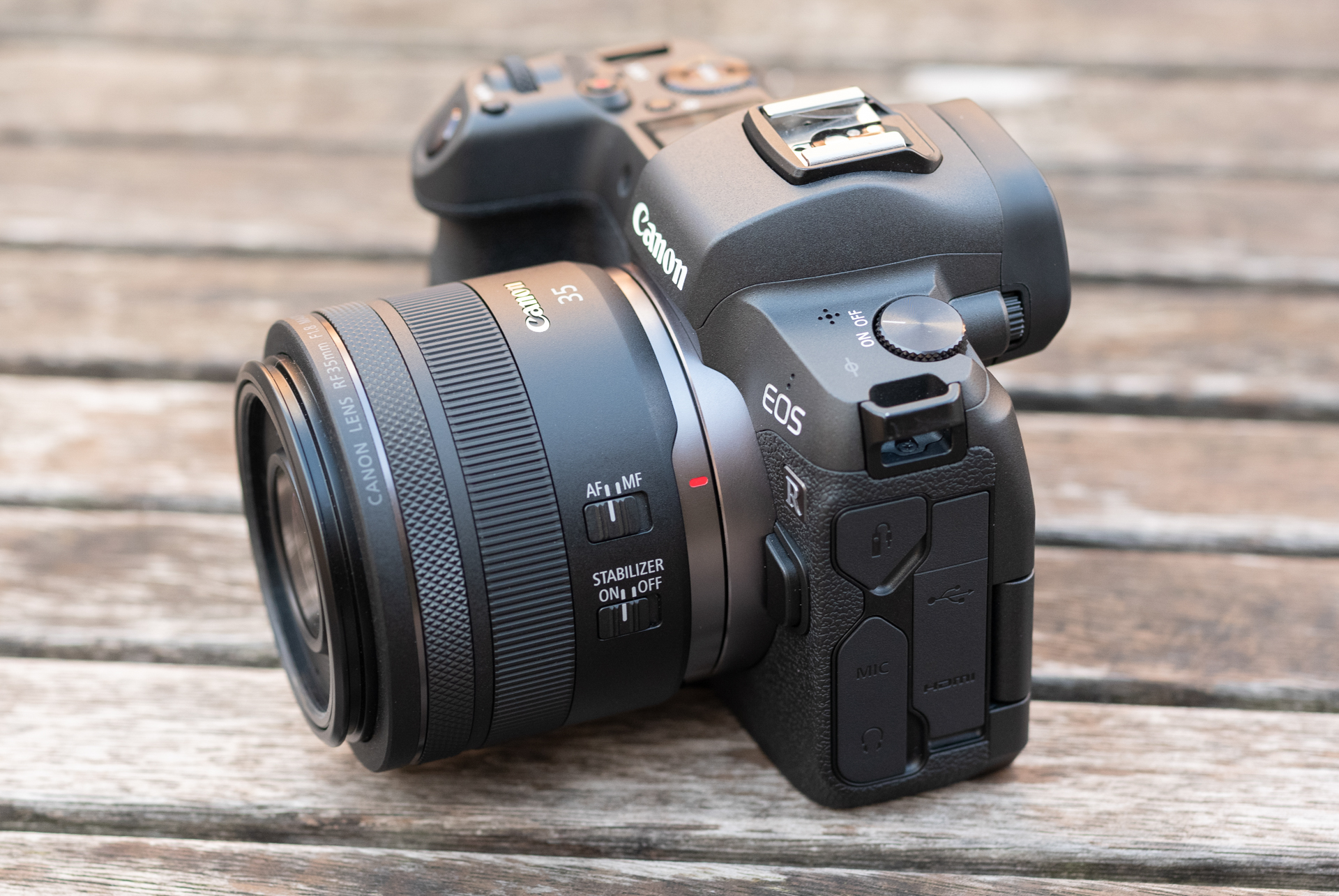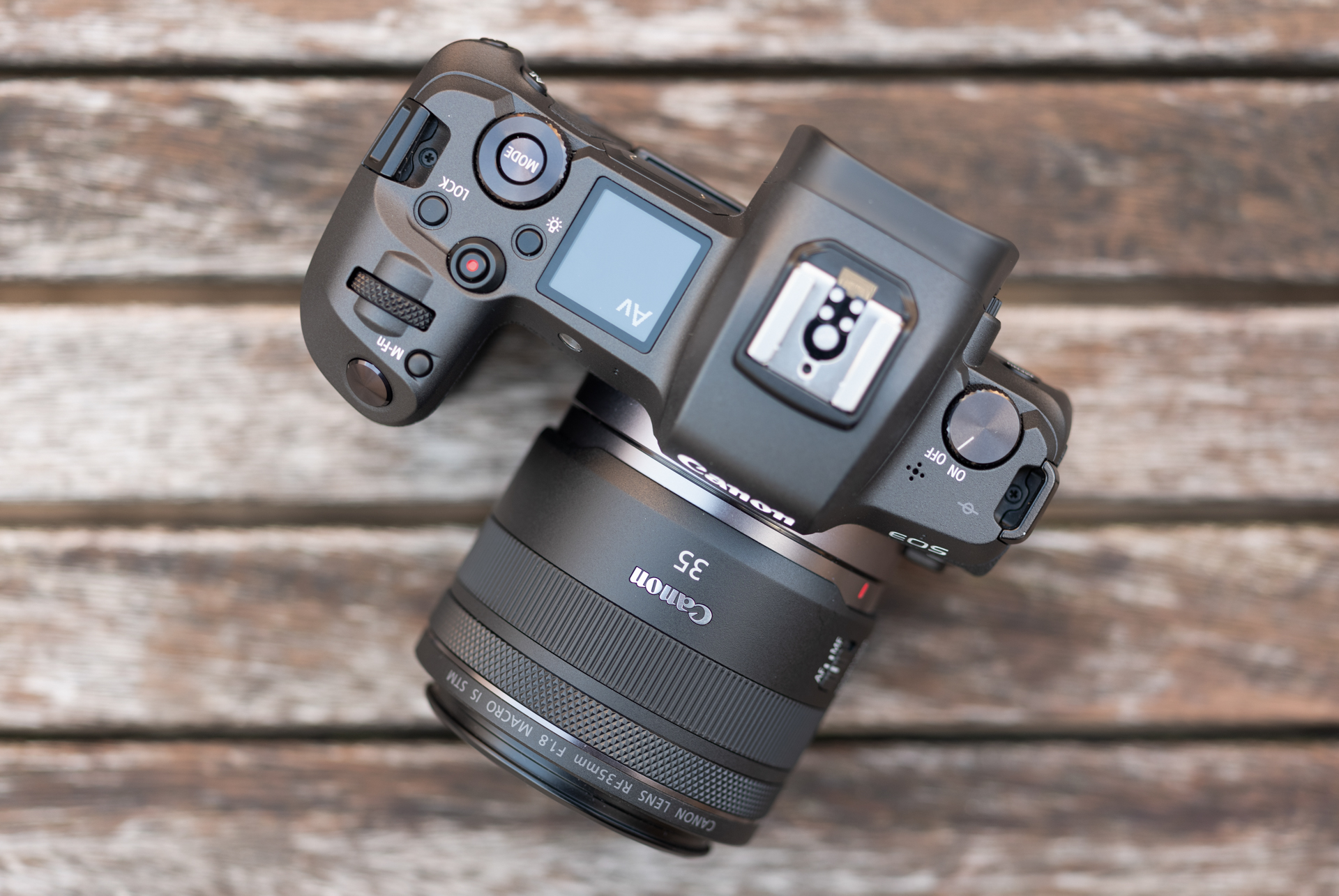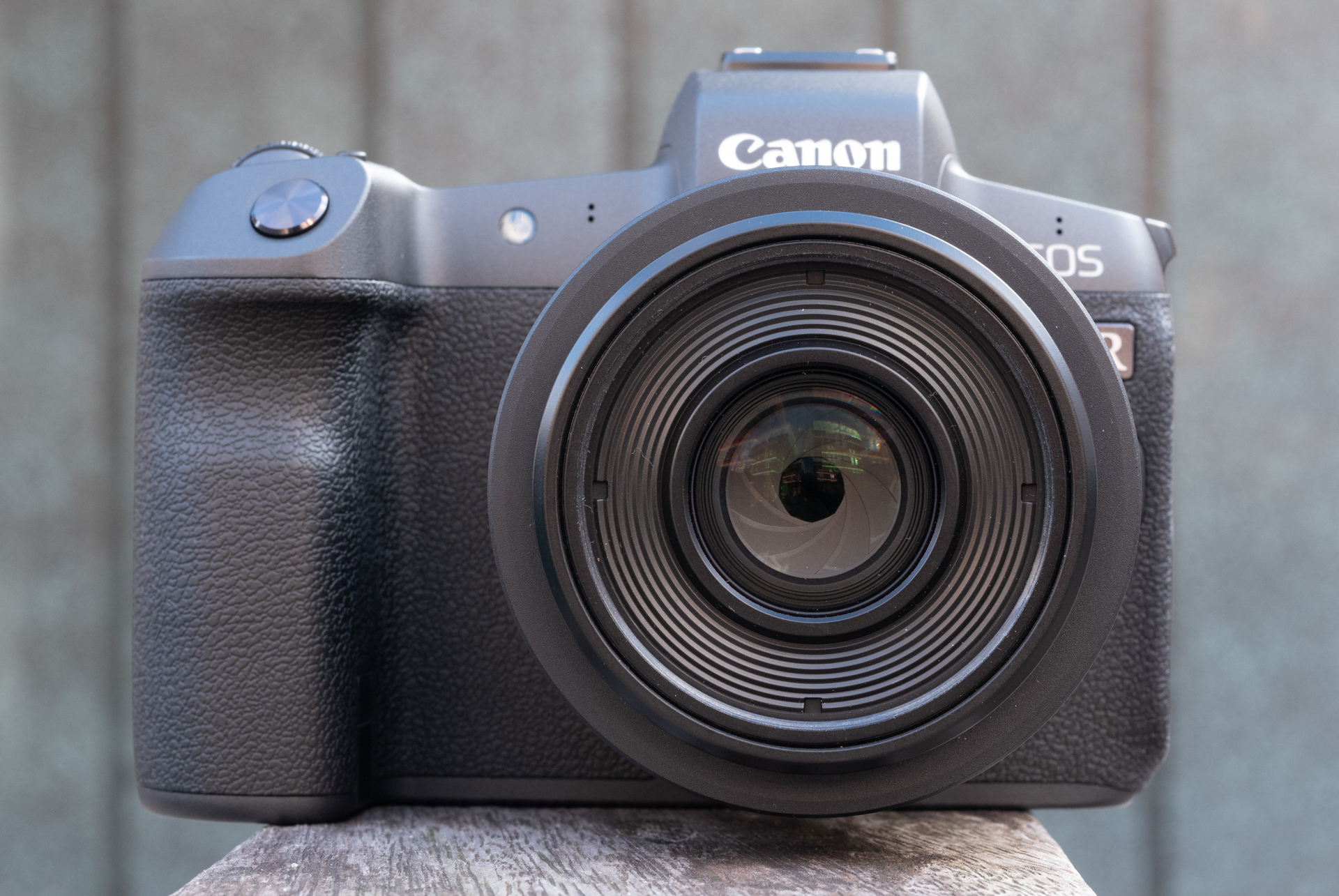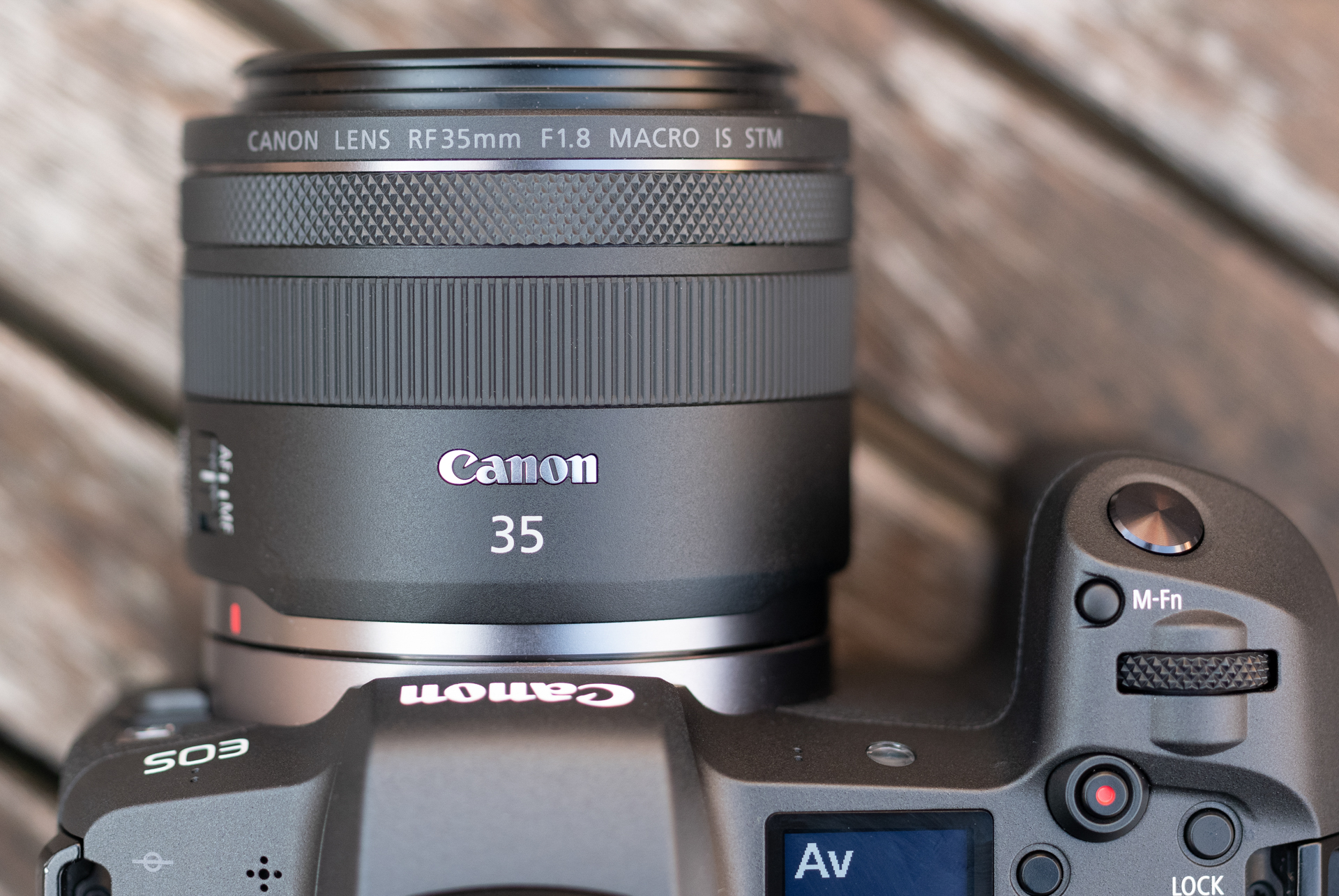TechRadar Verdict
A 35mm 0.5x macro lens may be an odd choice for one of the RF line’s first few lenses, but it’s nice to have a compact alternative to the other optics released so far. It’s a shame it’s not a true macro lens, but if you think of it more as a wide-aperture, wide-angle with the advantage of close-focusing capabilities and effective image stabilization, you’ll appreciate just how versatile it can be.
Pros
- +
Compact and well balanced on EOS R
- +
Great build quality
- +
Lens control ring is a useful inclusion
- +
Fast AF system
- +
Great sharpness at moderate apertures
- +
Very good corner sharpness wide open
Cons
- -
Not a true 1:1 macro lens
- -
Moderate vignetting at widest apertures
- -
A little curvilinear distortion
- -
No focus limit switch
- -
AF motor somewhat noisy during stills
Why you can trust TechRadar
One of four lenses announced alongside Canon's EOS R mirrorless camera, the RF 35mm f/1.8 IS Macro STM is the only lens in the line so far to come without the high-end 'L' designation.
It is, however, significantly smaller and lighter than its stablemates, and manages to combine a versatile 35mm focal length with a respectably wide aperture. It's also a great deal more affordable, and with a few added extras on board it should retain plenty of appeal for EOS R-series users, whether they intend to use it for street photography, travel, nature, environmental portraiture or even video.
Focal length: 35mm
Mount: Canon RF
Filter size: 52mm
Max aperture: f/1.8
Maximum magnification: 0.5x
Dimensions: 74.4 x 62.8mm
Weight: 305g
Features
- 0.5x magnification
- 5-stop Image Stabilizer with Dual Sensing IS support
- STM motor
The versatility of the RF 35mm f/1.8 IS Macro STM is boosted even further by the inclusion of a five-stop hybrid image stabilization system, a useful addition in the absence of sensor-based stabilization on the EOS R and EOS RP. This corrects for both angular and shift camera shake, the latter being more of a concern when capturing subjects up close.
Theoretically, this image stabilizer allows for a maximum five-stop correction, which should allow users to drop their shutter speed to around a second or so, thus opening up new possibilities in sub-optimal lighting conditions. The system also works with information from the host camera's image sensor to provide even more effective correction, a partnership dubbed Dual Sensing IS. On top of that, the lens-based system also partners with five-axis electronic stabilization from the camera when capturing videos.
The lens's name makes its close-focusing capabilities clear, although this isn't a true macro lens in the sense that magnification is 0.5x rather than 1x. This means subjects are captured at half their actual size on the sensor, rather than at their full size, as macro lenses with a 1x magnification allow.
The close focusing distance of 17cm allows you to get relatively near to subjects, although anyone requiring something a little more powerful can choose an optic from Canon's EF lens portfolio and use it in conjunction with one of three EF-EOS R adapters.
The diaphragm inside the lens is formed of nine blades, a perfectly respectable figure for such an optic, while the optical configuration sees 11 elements spread across nine groups. Super Spectra coatings have also been applied to help keep light transmission high and optical aberrations low.
Build and handling
- Focus and lens control rings
- Metal mount
- Weighs 305g
The RF 35mm f/1.8 IS Macro STM sports an attractive and minimal design, and it looks (and feels) perfectly balanced when mounted on the EOS R. The mount is metal, but if you look closely you’ll see the outer barrel has been finished in a way that blends with the space grey finish on the throat on the camera body. The lens mounts on the body without stiffness and dismounts just as easily; overall, there’s nothing to fault here.
A pair of switches have been designed into the barrel, one for changing between autofocus and manual focus and the other for image stabilization. These are joined by two rings around the barrel: the larger of these is used for manual focus while the thinner Lens Control ring towards the front can have a variety of different tasks assigned to it, from changing shutter speed and aperture through to adjusting ISO, exposure compensation and more.
These two rings also sport a slightly different finish from one another, which is useful if you’re working in conditions in which they’re not visible – which is which will no doubt become second nature before long.





There’s no focus distance window on the lens itself, although given that there isn’t one designed into any other RF lens so far – and that an equivalent option can be brought up on the camera’s LCD screen when focusing – it would appear that the decision to not include one is deliberate, rather than due to a lack of space or any other reason.
Focusing itself isn’t internal, as the inner barrel extends out from the lens as it moves through its focusing range. Internal focusing is certainly a desirable feature, particularly on a macro lens as this prevents any movements affecting both the lighting of the subject and unwanted interaction with live subjects such as insects, but its omission here is arguably not all that important.
After all, any changes in the length of such a small and lightweight lens have practically no effect on the centre of gravity of the setup, so there are no worries about any imbalance as the lenses focuses. Furthermore, with a close-focusing distance of 17cm, it’s far less likely that the barrel’s extension will have any effect on a subject, either in terms of casting a shadow or disturbing a live target.
Performance
- Speedy AF system
- AF can be noisy
- Effective image stabilizer
Canon’s STM technology has been used throughout its EF, EF-S and EF-M lenses, but the RF 35mm f/1.8 IS Macro STM is the first RF lens to feature it (all the others so far employ USM motors). STM motors are designed primarily to focus smoothly and quietly, which is particularly useful for video recording, although on a lens with close focusing capabilities it has the further advantage of being more discreet around live subjects.
In use, the lens focuses discreetly during video recording, with just slight clicking and whirring heard when there’s no ambient sound to mask this. This is easily covered up when using the lens outdoors or wherever else there's some noise, although those taking video recording seriously will no doubt be using manual focus anyway.
When shooting stills, however, sounds from the focusing system are more noticeable, particularly if the lens has to move throughout its entire focusing range. This makes it less than ideal for more candid situations, although focusing itself is pleasingly fast, whether you instigate this conventionally or by using the camera's touchscreen.

Click here to see the full-size image

Click here to see the full-size image

Click here to see the full-size image

Click here to see the full-size image

Click here to see the full-size image

Click here to see the full-size image
Vignetting can be seen in images until around f/3.2, although the worst of this disappears by f/2.8. If you’re planning on using the lens at its widest few apertures with any frequency, it’s a good idea to keep the relevant correction enabled in-camera or to remember to check this when it comes to processing your images.
The same applies to curvilinear distortion, as a small amount of this can be seen in images containing architectural details or other straight lines, but this is otherwise negligible.
Sharpness is more than acceptable at the widest aperture of f/1.8, and despite a little softness, details in the corners of the frame are rendered with better clarity than we may expect. As we might expect, better results can be had at slightly smaller apertures, both with regards to overall sharpness and consistency across the frame.
The image stabilizer works well, and while we weren't able to consistently achieve sharp shots at a shutter speed of 1 sec, the sharpness of many images captured at 0.5 sec was perfectly acceptable. It's a good idea to not let shutter speed drop too much when shooting close to the subject, though, particularly when shooting at very small apertures such as f/1.8; sticking to slightly higher shutter speeds and using a tripod is a much better approach, as slight softness was noted when the camera was left to a semi-manual exposure mode such as aperture priority.
Verdict
With the other three current RF lenses being as large, heavy and pricey as they are, it's great to see Canon offering something that's still very capable but far more accessible alongside them. The RF 35mm f/1.8 IS Macro STM is certainly capable of very good image quality, helped in part by a clearly effective stabilization system, while autofocus is reassuringly prompt, if a little noisy.
With the further advantage of the customizable lens control ring, EOS R-series users are afforded more physical control than is the norm for such a lens, although those frequently shooting close-up to the subject may have preferred a focus limit switch. That said, the speedy nature of the focusing system means that if the lens does need to hunt, it doesn't do so for long.
Optical quality is also very good, although it's a good idea to keep the various lens aberration corrections available on the EOS R and EOS RP when using the lens, to deal with the aberrations that can be seen.
Overall, this is a sound choice for EOS R users after a versatile prime lens.
The TechRadar hive mind. The Megazord. The Voltron. When our powers combine, we become 'TECHRADAR STAFF'. You'll usually see this author name when the entire team has collaborated on a project or an article, whether that's a run-down ranking of our favorite Marvel films, or a round-up of all the coolest things we've collectively seen at annual tech shows like CES and MWC. We are one.
